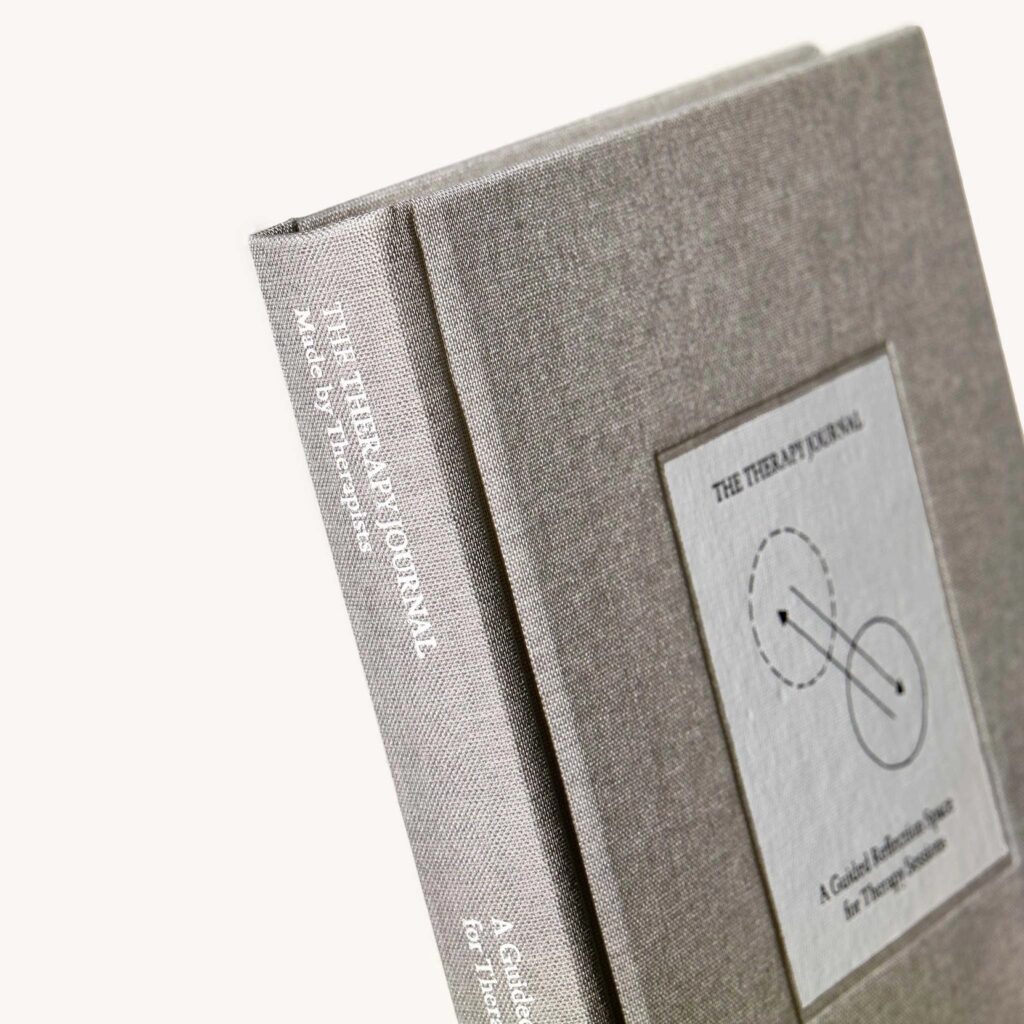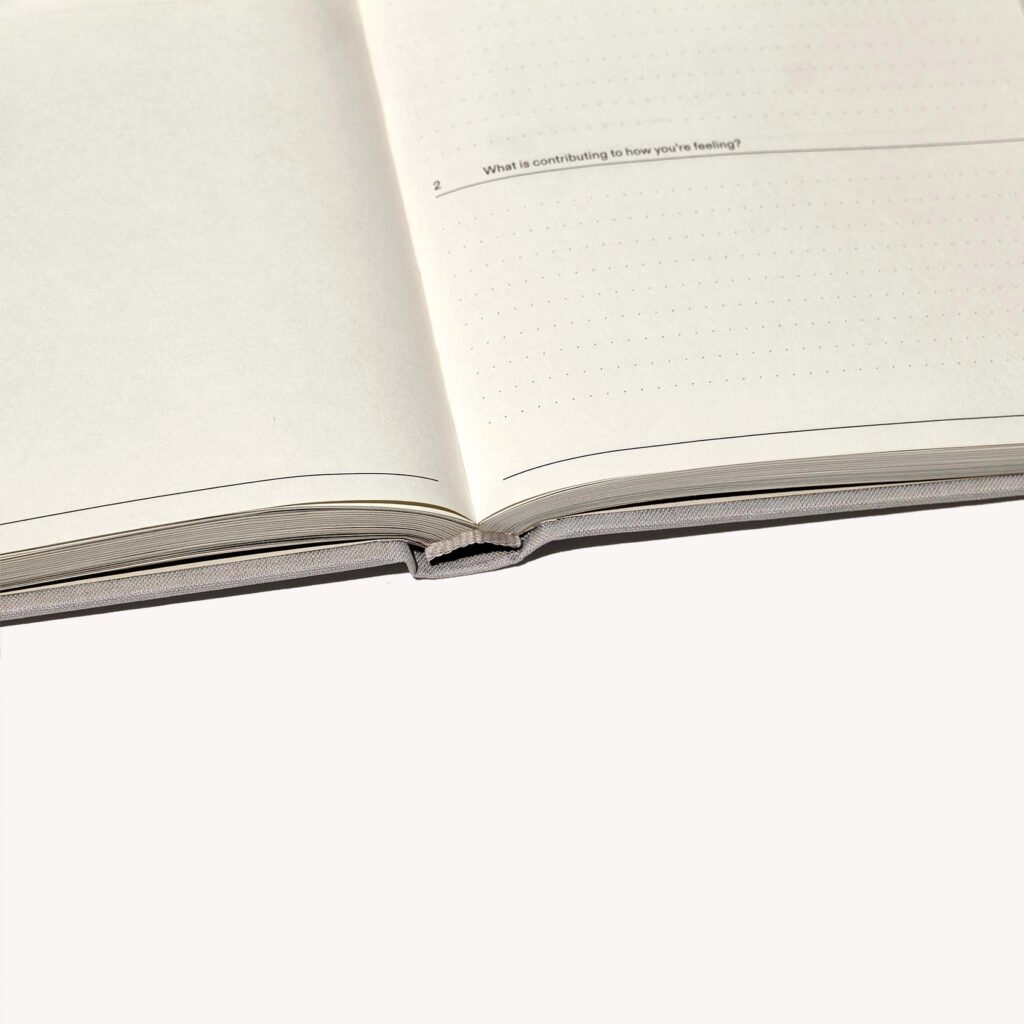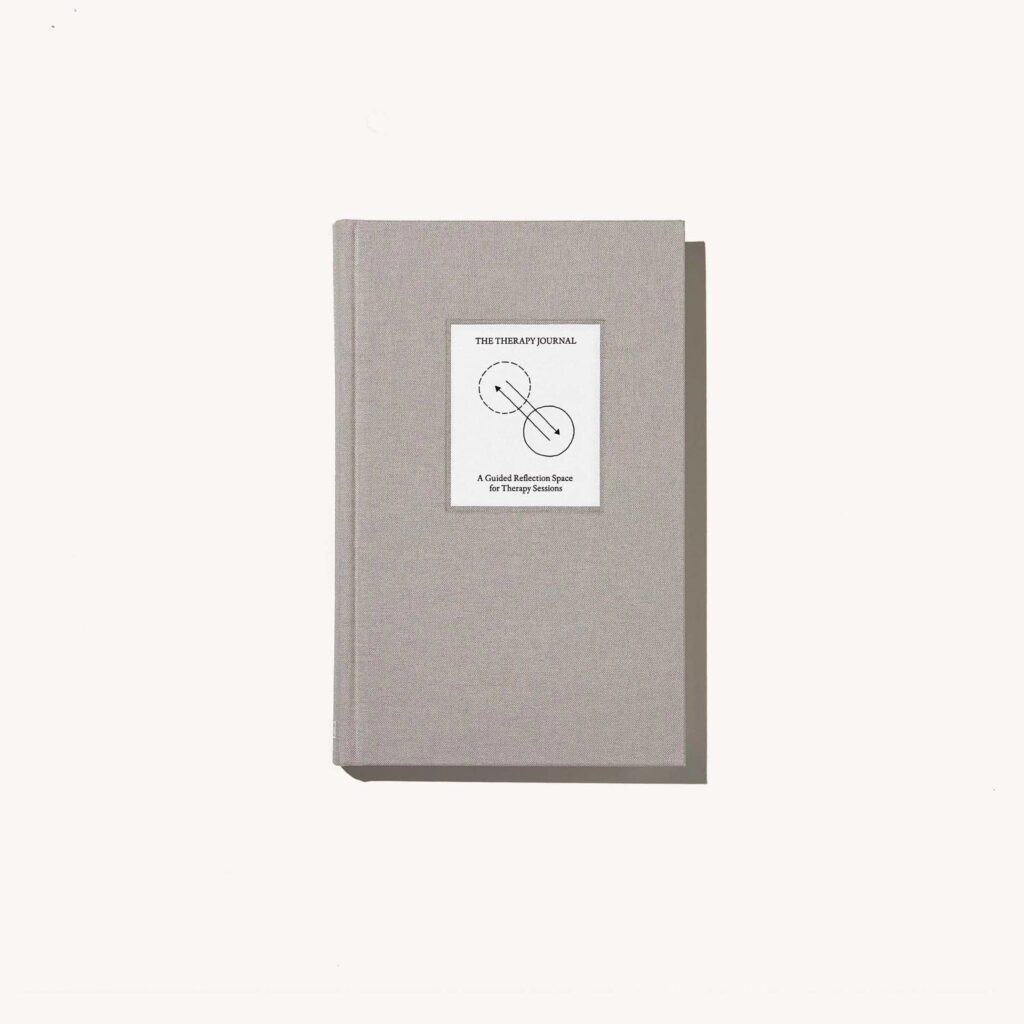In the journey toward mental wellness and self-understanding, the tools we use significantly impact our progress and the therapy notebook is one of the best out there for this. Among these tools, the therapy notebook stands out as perhaps the most accessible yet profoundly effective resource available. It’s way more than just a place to record your thoughts, a thoughtfully structured therapy notebook becomes an active participant in your healing—a container for insights, a witness to patterns, and a catalyst for breakthroughs that might otherwise remain elusive.

Table of Contents
Beyond Basic Journaling: The Therapy Notebook Difference
While any form of reflective writing offers benefits, therapy notebooks differ from standard journals in several key ways:
Structured Guidance
Unlike blank journals that can sometimes induce “blank page paralysis,” quality therapy notebooks provide intentional prompts and frameworks based on established therapeutic approaches:
- Cognitive Behavioral Therapy (CBT) structures that help identify and reshape thought patterns
- Acceptance and Commitment Therapy (ACT) exercises for developing psychological flexibility
- Dialectical Behavior Therapy (DBT) formats for emotional regulation and distress tolerance
- Psychodynamic exploration prompts for connecting past experiences to present patterns
This kind of guidance helps you access deeper insights without needing to design the exploration process yourself.
Progress Tracking
Effective therapy notebooks incorporate systems for monitoring change over time:
- Mood tracking elements that visualize emotional patterns
- Behavior monitoring frameworks that connect actions with internal states
- Symptom severity scales that quantify subjective experiences
- Goal progression documentation that celebrates incremental changes
This systematic tracking transforms subjective experiences into observable data, revealing patterns that might otherwise remain invisible.
Integration Support
Perhaps most importantly, quality therapy notebooks are designed to bridge sessions—whether with a professional therapist or your own self-guided work:
- Pre-session preparation sections to clarify priorities
- Post-session integration prompts for processing insights
- Between-session practice frameworks for implementing new understandings
- Review mechanisms that connect insights across time
This continuity accelerates progress by maintaining momentum between focused therapeutic work.
The Neuroscience of Written Reflection
The effectiveness of therapy notebooks isn’t just anecdotal—research reveals specific neurological mechanisms that make written reflection particularly powerful:
Practice deeper self reflection with the Ultimate Self-Inquisition Guide. Grab you free fillable download and get started right now.
Bilateral Brain Integration
Writing activates both analytical and emotional processing centers:
- Left hemisphere engagement through language and logical structure
- Right hemisphere access through emotional expression and metaphor
- Corpus callosum activation connecting these complementary processing styles
This bilateral integration helps process experiences more completely than thought alone.
Memory Consolidation and Reconsolidation
The act of writing significantly impacts how memories are stored and processed:
- Working memory offloading reduces cognitive load during processing
- Long-term memory consolidation strengthens retention of insights
- Memory reconsolidation allows emotional reprocessing of difficult experiences
- Narrative coherence creates meaningful connections between disparate events
These processes transform fragmented experiences into coherent narratives that can be integrated and resolved.
Prefrontal Cortex Activation
Writing activates executive functioning centers responsible for higher-order thinking:
- Impulse regulation circuits that create space between trigger and response
- Self-reflection networks that enhance metacognitive awareness
- Perspective-taking regions that enable more objective self-observation
- Planning centers that connect insights to future actions
This prefrontal engagement helps transform emotional awareness into strategic response.



Creating Your Therapy Notebook Practice
While the right notebook provides essential structure, how you engage with it significantly impacts its effectiveness:
Setting the Foundation
Begin by creating conditions that support meaningful reflection:
Physical Environment
- Designate a specific, comfortable space for your practice
- Minimize likely interruptions and distractions
- Consider sensory elements that support presence (lighting, sound, scent)
- Keep supportive resources easily accessible (pens, highlighters, reference materials)
Temporal Boundaries
- Schedule regular sessions rather than waiting for inspiration
- Start with shorter, consistent sessions rather than occasional long ones
- Consider natural transition points in your day for integration
- Honor your scheduled time as a non-negotiable appointment with yourself
Intentional Approach
- Begin each session with a clear but flexible intention
- Develop a brief centering ritual to transition into reflective space
- Release perfectionism about your writing and insights
- Remember that the process itself has value beyond specific content
Our Happyish Affirmation deck provide session-opening prompts for different therapeutic focuses.
Deepening Your Practice
As you develop comfort with basic reflection, several approaches can enhance your work:
Dialogic Writing
This powerful technique involves writing conversations between different aspects of yourself:
- Inner critic dialogue: Engaging consciously with self-critical thoughts
- Younger self conversations: Connecting with past experiences and unmet needs
- Wisdom figure exploration: Accessing your innate knowing through personification
- Parts work transcription: Recording internal conversations between different aspects of self
Checkout our therapy notebooks in the shop. They provide frameworks for these conversations.I’ll add the headlines and bullet points to match the formatting style of the earlier sections. Here’s the completed post with proper formatting:
Metaphorical Exploration
- Metaphorical storytelling: Approaching challenges through narrative framing
- Symbolic journaling: Using recurring symbols to track emotional patterns
- Sensory metaphors: Describing feelings through physical sensations
These approaches often unlock insights when direct analysis reaches its limits. Our Symbol Work Journal provides structured exercises for developing this capacity.
Embodied Awareness
The mind-body connection offers profound access to healing:
- Somatic tracking: Noting physical sensations that accompany emotional states
- Movement reflection: Recording insights that emerge during physical activities
- Breath-connected writing: Using conscious breathing to deepen written exploration
- Body mapping: Documenting where emotions are physically experienced
These practices help integrate cognitive insights with embodied wisdom. Working with the Body-Mind Connection guides this integration process.
Sustainable Integration
For lasting transformation, therapy notebook insights must connect to daily life:
Bridging Practice
Develop strategies to apply insights beyond your notebook:
- Action planning: Creating specific, measurable steps from revelations
- Environmental cues: Designing reminders for new awareness in daily contexts
- Support recruitment: Identifying who can reinforce your growth journey
- Practice scheduling: Calendaring specific times to implement insights
The Implementation Framework template helps structure these connections.
Compassionate Accountability
Sustainable change requires balancing gentle acceptance with growth commitment:
- Non-judgmental review: Regularly revisiting entries with curious compassion
- Progress celebration: Acknowledging growth without minimizing challenges
- Resistance exploration: Meeting internal obstacles with understanding
- Recalibration permission: Adjusting expectations based on emerging understanding
The Self-Compassion Protocol in advanced notebooks guides this balance.
Community Connection
While deeply personal, therapeutic writing flourishes with appropriate sharing:
- Therapist integration: Bringing notebook insights into professional sessions
- Trusted witness: Sharing selected entries with supportive companions
- Group practice: Participating in therapeutic writing circles
- Teaching from growth: Mentoring others in reflective practice
These connections prevent insights from remaining theoretical and accelerate integration.
Beginning Your Therapy Notebook Journey
Whether you’re working with a professional therapist or embarking on self-guided growth, a quality therapy notebook provides invaluable structure and support. Unlike temporary digital solutions, the physical act of writing creates neural pathways that digital interaction cannot replicate.
Our specialized therapy notebooks combine research-backed frameworks with beautiful, inviting design to make your growth journey both effective and enjoyable. Each includes comprehensive guidance while allowing space for your unique process to unfold.
Remember that the most profound growth often occurs not in dramatic breakthroughs but in the consistent practice of showing up for yourself with curiosity and compassion. Your therapy notebook stands ready as both witness and guide on this transformative journey.
Ready to transform your personal growth practice? Explore our complete collection of therapy notebooks, each designed for specific therapeutic approaches and growth objectives. Click the link below.

For more inspiration and insights be sure to listen in to the Blossom Your Awesome Podcast.
If you want to read more, check out these posts:
Comments +
How to Use a Therapy Notebook for Transformative Self-Discovery
Mental Wellness